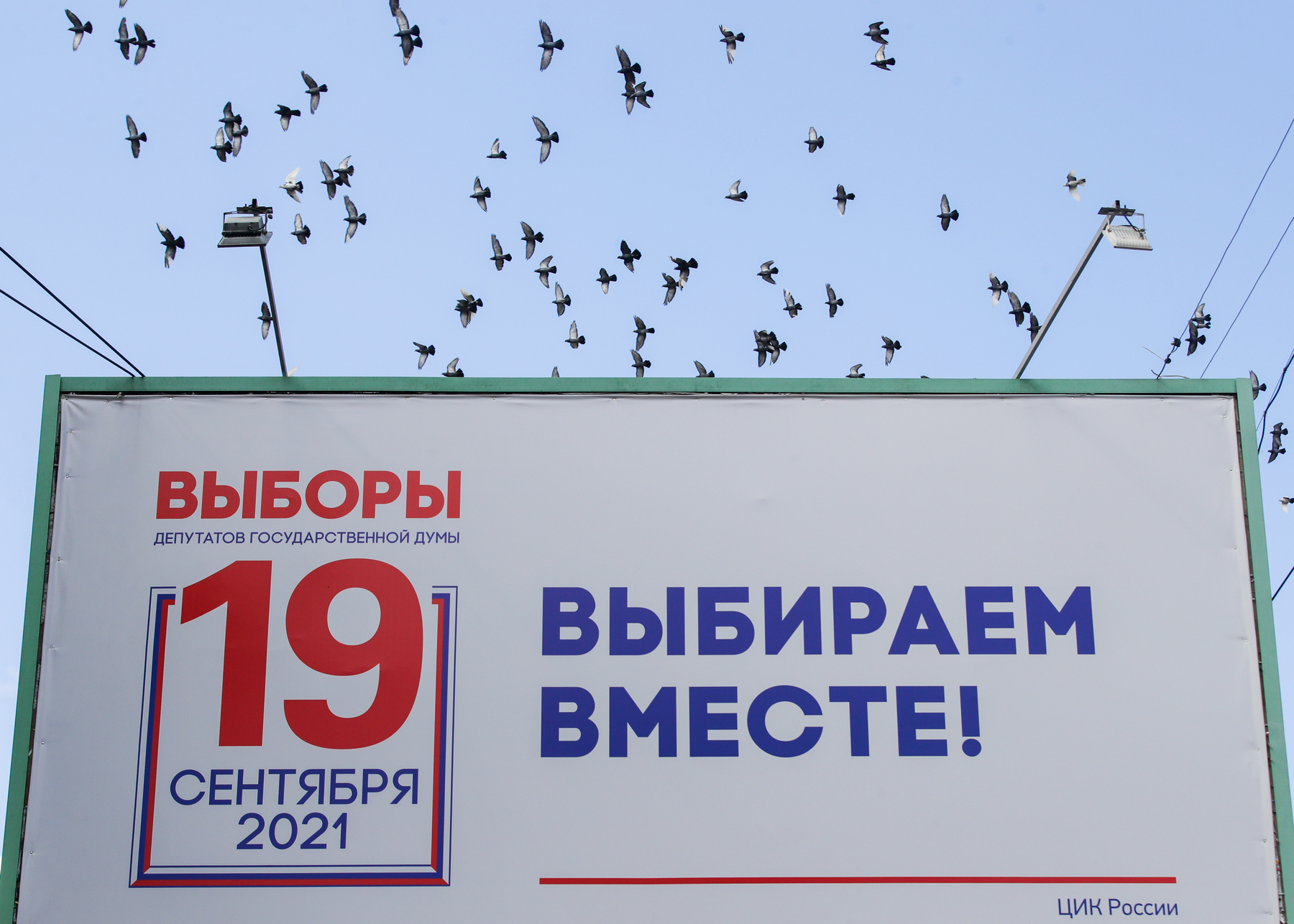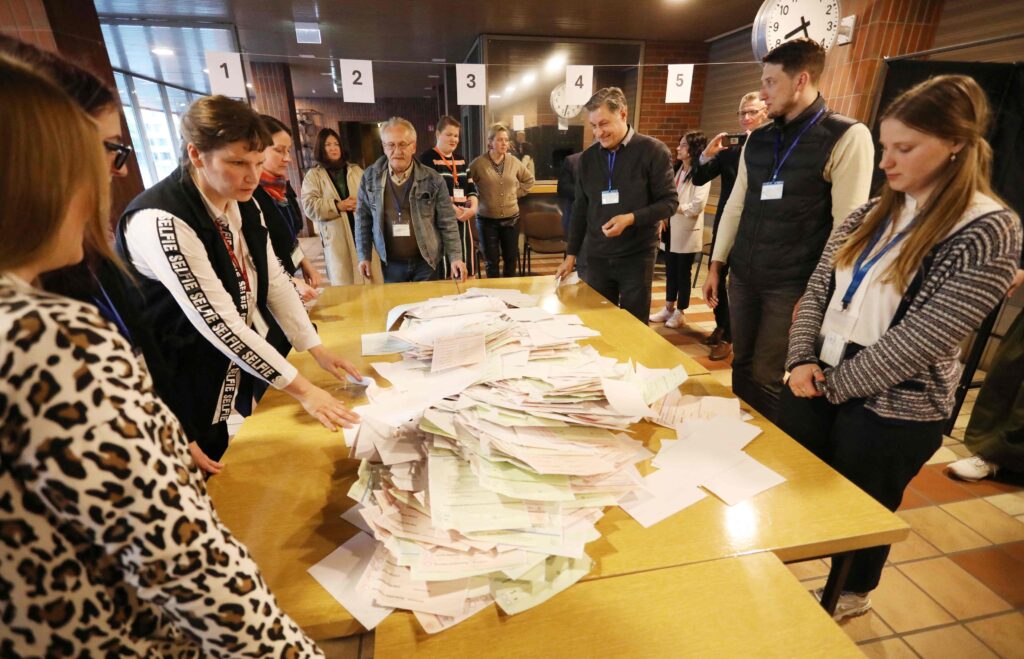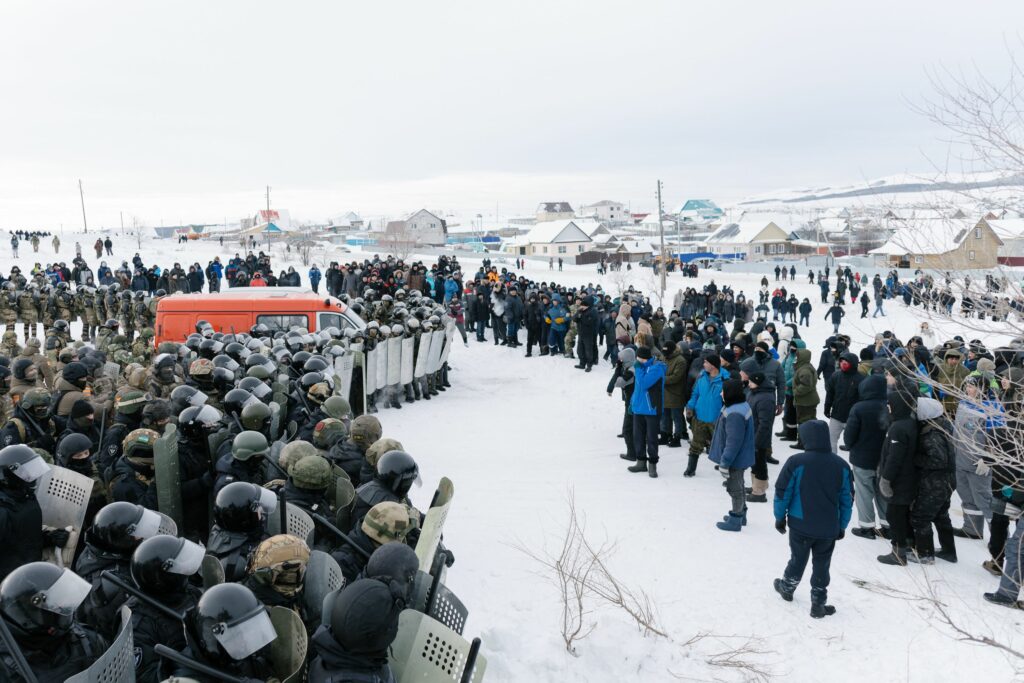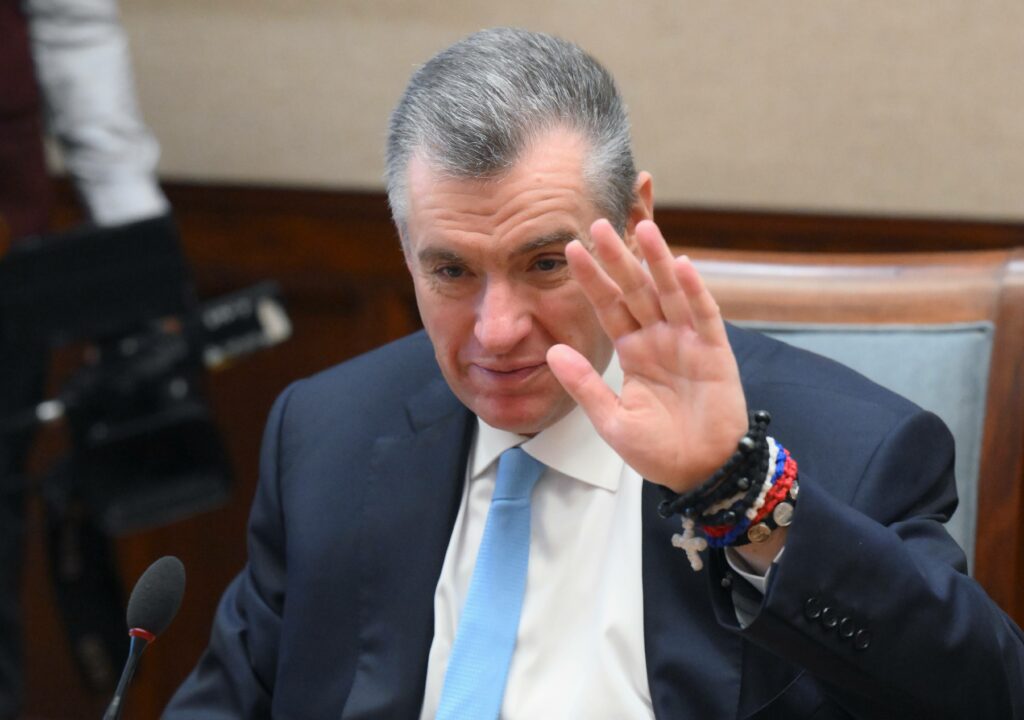On September 17-19, Russians are set to elect State Duma representatives, nine regional heads, deputies for 39 regional parliaments, nine regions’ central administrative councils, and countless local parliamentarians. These are proceeding alongside a new wave of repression, leading many to dismiss these as the worst elections in Russia’s modern history.
Despite the daily onslaught of bad news, let’s not rush to single out these elections as the worst: there are plenty of other competitors for that title. However, the upcoming elections could very well be the final ones for this chapter of history.
Russia’s electoral system since the mid-2000s stands on four pillars. The first two are the government’s control of candidate registration and of media coverage. The third pillar is voter coercion, while the fourth is vote rigging on election day itself. The balance of these variables differed between election cycles depending on the political situation at hand. While the Russian government turns these knobs as they see fit, it is often constrained by political realities.
To get an accurate read of the 2021 elections, it is important to look at each of these variables, along with the political context around them, one by one.
Controlling candidate registration
The Russian government’s first line of defense is filtering candidates at the stages of nomination and registration. This turned out to be the key step for many elections, and is playing a similarly key role today. We already wrote how over nine million Russians are denied the right to be elected, though the actual figure is likely even higher. In early summer, right before the start of election season, the authorities passed a series of electoral laws that forbid anyone who is in some way connected to extremist or terrorist organizations to run for office. The law is so ill-defined that it could apply to almost anyone.
This forced several strong political figures to withdraw from elections or “voluntarily” refuse to run for office. As a result, experts with the Golos electoral rights monitoring group have recorded a noticeable drop in citizens’ interest in becoming a candidate in elections and a spike in denied registrations.
However, Russian history in the last twenty years saw electoral races that were even harder to join. Parliamentary elections in 2007 and 2011 adhered exclusively to party lists, not a mixed system. In 2007, there were only 15 parties, with just 11 of them eligible to participate in elections. Their number dropped to seven in 2011, while the barrier to entry jumped to an absurd 7%. In practice, it was enough for the Kremlin to control this handful of parties in order to block any undesirable candidates. An added benefit was that responsibility for filtering candidates rested on party leaders, a job they managed quietly and without adding publicity headaches for the Kremlin.
Despite the new electoral restrictions, today there are more possibilities to nominate independent candidates. There are currently 32 parties in Russia, 14 of which have parliamentary eligibility (they do not need to gather voter signatures to nominate candidates). There are also 225 electoral districts where candidates can nominate themselves. Needless to say, authorities have successfully filtered out undesirables, but the chance to slip through the net and onto the ballot is much higher today than ten years ago. Furthermore, the last few years show that it is not always enough for authorities to flat-out ban competition: since 2018, a few major elections saw candidates win after either not campaigning at all or actually asking voters not to vote for them.
Controlling the media space
According to the universally accepted European standards for democratic elections, voters cannot freely make their choice without having a normal and public political discussion. Two of the most important conditions for this are freedom of expression and freedom of assembly. The latter has been doing poorly around the world for the past two years due to the coronavirus pandemic. The freedom of expression has been under fire in Russia for a long time, with the country traditionally languishing at the bottom of the World Press Freedom Index.
The Golos movement’s samples from the current election cycle confirm this: from the beginning, national television channels have given the United Russia Party twice as much air time as for all the other parties running for office combined. The channels also cover party programs selectively, trying to sidestep political questions, and sometimes simply cut out portions of televised debates.
Nevertheless, every successive election sees a greater role played by social media, which are much freer despite some influence from the government. And social media shows a totally different world than the one on TV, showing how the Communist Party (CPRF) is starting to compete with United Russia and other political parties and candidates are on the rise. A few years ago, it was hard to imagine a political video gathering 100 million views on YouTube, but Alexey Navalny’s did so in 2021. Some oppositional and independent social media pages’ audiences are becoming comparable to those of state-controlled media. This media competition is not yet even, but it is already on a whole different level.
Voter coercion
Pressuring people to vote the “right” way has worked for years. The authorities rarely used direct control over voters. Instead, they simply mobilized those groups that they absolutely trusted. This was clearly on display in the 2018 presidential election. However, Vladimir Putin’s triumph that year came just before the pension reform that brought unexpected consequences for some regional and local elections, alongside an overall drop in trust toward the government. Coercion also started to backfire. Elections to the Moscow City Duma in 2019 showed this effect. Their turnout of 21.77% nearly mirrored the 2014 election (21.04%), but their result was markedly different. The variation means that those voters who were coerced to vote for the authorities (like in 2014) either failed to show up at the polls, with others showing up in their place, or voted in a way the authorities did not expect. Similar cases have happened in other regions.
Once again, complaints of voter coercion are streaming in with the current election campaign. On the Golos group’s Violation Map as of September 7, almost every tenth complaint deals with coercion. Notably, there are two to two-and-a-half times fewer of them than in the analogous period in 2018. But complaints in Moscow are reporting pressure on voters to cast electronic ballots, which could be a reference to the Russian electoral system’s fourth pillar: vote falsification.
Falsification on election day
Vote rigging is one of the most talked about electoral topics of the last ten years in Russia. Experts use various statistical methods to gauge their magnitude. Electoral statistician Sergey Shpilkin wrote that in all of Russia’s electoral history, the 2008 presidential election contained the most falsifications (we must note that we are not including the 2020 constitutional plebiscite in this tally, as it occurred almost without any checks and cannot be compared to real elections). Vote rigging peaked in 2008-2012, which triggered the 2011-2012 mass protests and caused the authorities to try reining in causes for public demonstrations.
Most vote rigging started to take place in “electoral sultanates,” a dozen or so notorious regions around the country. A similar amount of regions have actually not seen major falsifications in recent years. The rest are somewhere in between, with relatively “clean” districts on one hand and those where results can be edited as authorities see fit on the other. The “electoral sultanates” and their analogous territories in other regions make up the mass of rigged votes.
This year, two more factors are compounding the vote rigging problem: electronic distance voting and three-day voting. While electronic voting is plagued with a lack of transparency, for now it is a localized problem limited to seven regions: Moscow, Sevastopol, and the oblasts of Kursk, Murmansk, Nizhny Novgorod, Rostov, and Yaroslavl. The greatest share of online ballots that threatens the sanctity of the vote is currently only present in Moscow and Rostov Oblast. In the latter, half a million new Russian citizens from the so-called “LNR” and “DNR” are set to vote.
But the biggest threat to an honest vote is three-day voting. Civil society has actually learned how to fight falsifications quite effectively in the last few years. When observers appeared at polls in Dagestan, it was enough for their results to normalize and resemble other regions. The problem is that three times as many observers will now be needed, and there weren’t enough of them to go around the last time.
The situation can’t get worse in the “electoral sultanates” because they have hit rock bottom: it is physically impossible for them to produce more fraudulent votes. There are also no reasons to believe that the “clean” regions are going to worsen. That’s why the fifty or so regions in the middle are in the risk zone, some of which have strong party structures and developed cadres of observers.
In any case, it is impossible to evaluate vote rigging before it happens. Its magnitude will decide whether the current Russian elections will go down as the worst in post-Soviet history.
The context for the elections
All of this tells us that there really isn’t anything special about the current elections. Much of the situational context around them that is so shocking for news readers is not exactly unique, either. In the mid-2000s, independent Duma candidates went to jail (Mikhail Khodorkovsky), political killings shocked the nation (Yuri Shchekochikhin and Anna Politkovskaya), and even dissidents were poisoned (Alexander Litvinenko in London). The state also dissolved unique journalist unions, broke up unapproved demonstrations by “Strategy-31” and detained their participants, and even banned a political party that they designated as extremist – the National Bolshevik Party, which was the main driver for these protests. And pro-Kremlin movements also marched down the street, sometimes shouting quasi-fascist slogans. However, society did not react quite so sharply at the time: Khodorkovsky’s arrest did not lead to mass protests, and the NBP’s ban did not worry the media outlets that were considered as bulwarks of the freedom of speech at the time. That is the main difference from today’s elections. Ten years ago, a truly massive election observer cadre appeared on the scene. Around five years ago, Russian nonprofits and politicians learned to fundraise to such an extent that an entire class of civil society, not just a handful of organizations, could survive. 2019 saw the first mass protests against denied candidate registrations, not just in the aftermath of rigged elections. Now the state is starting to lose its monopoly in the media space, coercion is becoming ineffective, support from previously loyal electorates is fading out, and new politicians are replacing those who were jailed or forced to emigrate.
The toughened election laws thus appear to be the regime’s attempt to roll back this oncoming tide of public dissatisfaction. There is no feeling of the regime’s triumph like in 2014 (keep in mind how boring the 2016 Duma elections were compared to that year). There is no feeling of confidence in the temporary handover of the throne like there was in 2008. The present political situation looks more like a defense in depth. That is relatively good news. The bad news is that these elections, while far from perfect, could end up being Russia’s last in paper form. It is obvious that the government aims to implement electronic voting all across the country by the 2024 presidential election. If that happens, monitoring the sanctity of the vote will not even be theoretically possible.










